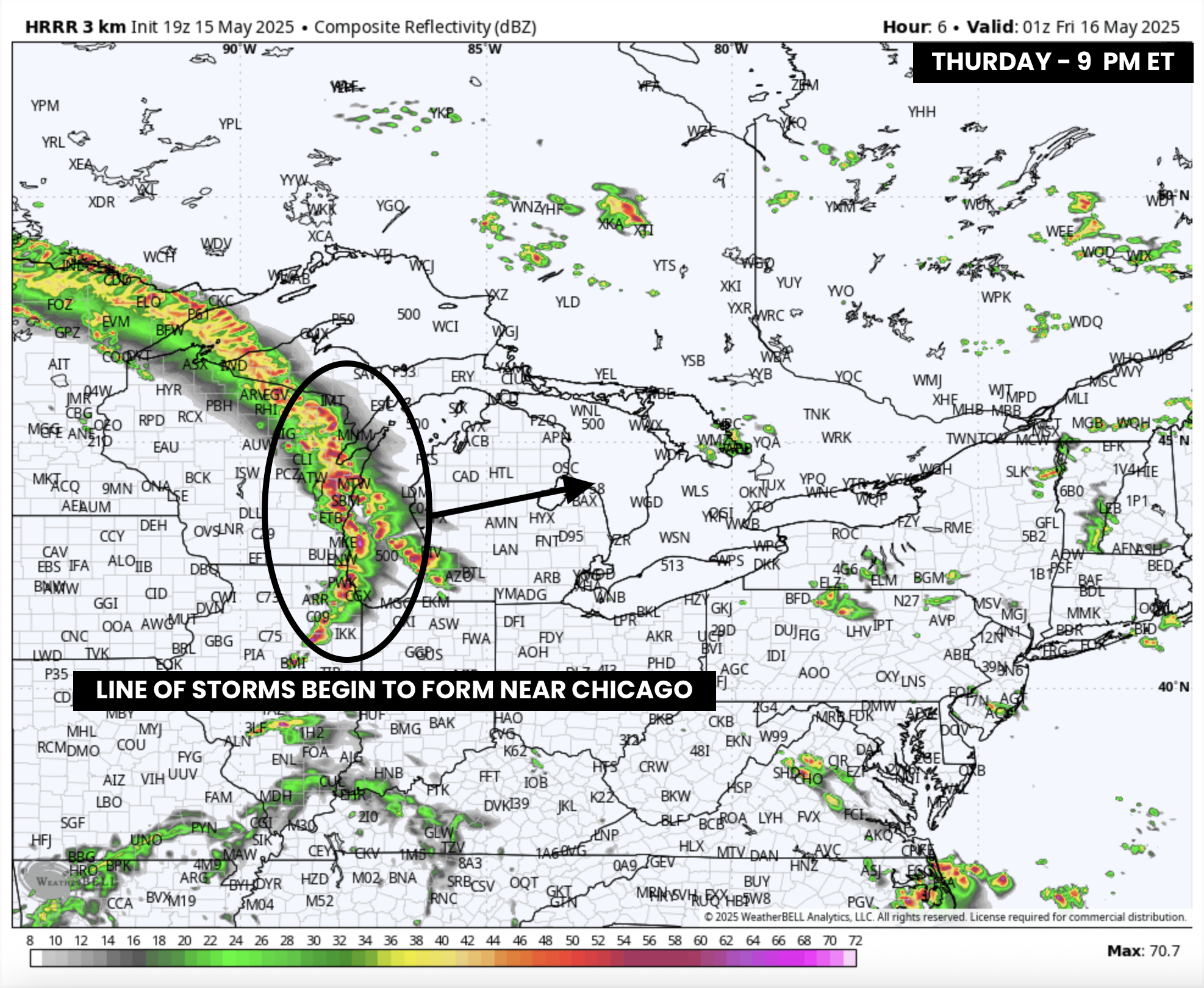Slight Risk for Severe Thunderstorms on Monday as a Cold Front Advances Through Alberta
/The past week was fairly quiet, as far as active weather is concerned, with the odd pop-up thunderstorm surpassing the severe threshold and a couple of funnel cloud reports. This week, however, is slated to start off with a bang as a cold front will move into Alberta later this afternoon, stretching the length of the province and triggering the development of thunderstorms over a widespread area.
We’ve already seen some scattered showers across parts of Central and Northern Alberta today, but the severe threat won’t begin until this afternoon, around 2-4pm. These will be fast-moving storms that will quickly develop and organize into a north-south line along the cold front as it crosses the province through the afternoon and evening. Storm activity will rapidly diminish as we get later into the evening, but isolated storms could continue until closer to midnight, if conditions remain favourable.
The greatest thunderstorm risk will stretch from Calgary northward up to Fort McMurray, highlighted in yellow on our map. This large region could see damaging wind gusts of up to 100km/h and large nickel to quarter-sized hail, along with torrential downpours. At this point, the threat of a tornado appears to be unlikely, but it can not be completely ruled out.
Fire danger map for may 26th produced by the government of Alberta
The amount of lightning associated with today’s storms could also be a concern. Warmer temperatures and drier conditions have elevated the wildfire risk over the past week and has led to High to Extreme Wildfire Danger across the entire province. Significant amounts of lightning, despite the presence of precipitation, could easily spark additional fires given these conditions.












































































